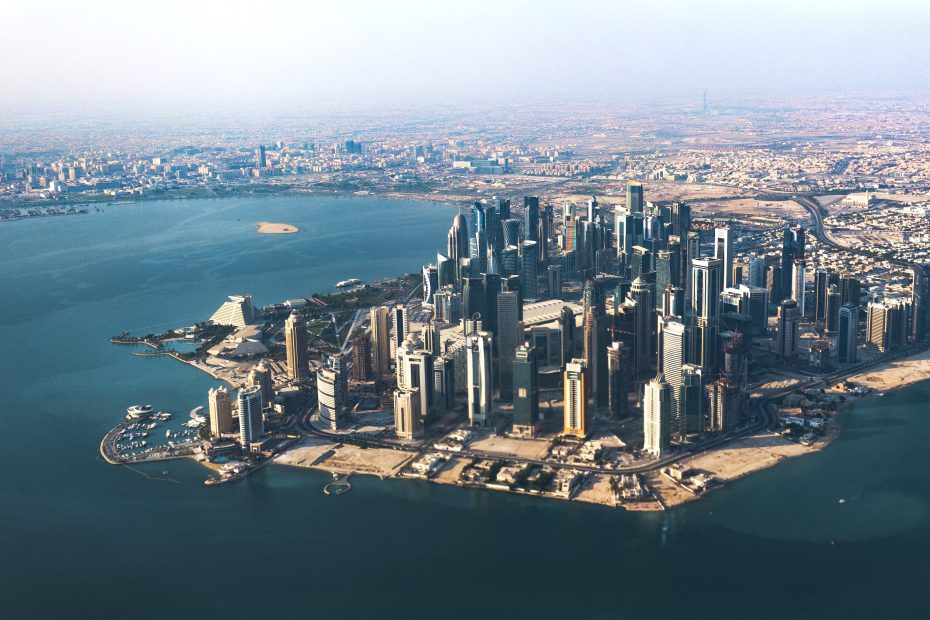Table of Contents
Introduction
Nestled on the eastern coast of Qatar, just south of the capital Doha, lies the seaside town of Al Wakra. With its winding lanes, traditional architecture, and palm tree-lined corniche, Al Wakra seems a world away from the glittering skyscrapers of nearby Doha. Though development continues at a rapid pace, Al Wakra has retained its identity as a historic fishing and pearling village. Known as an “oasis in the desert,” Al Wakra charms visitors with its blend of natural beauty, cultural heritage, and modern amenities.
Geography
Surrounded by the arid desert landscape, Al Wakra is a true oasis. Located around 15 km south of Doha, it occupies a stretch of coastline along the Persian Gulf. Groves of date palm trees and lush gardens irrigated with freshwater springs dot the town. Picturesque beaches, mangrove forests, and bird-filled wetlands provide diverse natural scenery. This verdant landscape seems all the more spectacular given its contrast with the rolling dunes of the desert that encircles Al Wakra. The fertile coastal location that first drew settlers centuries ago continues to nurture Al Wakra today.
Culture and Heritage
Al Wakra has its origins as a fishing and pearling village inhabited by tribes from neighboring Bahrain and Saudi Arabia. Narrow alleyways, traditional Islamic architecture, and historic forts and towers reflect this cultural history. A stroll through the atmospheric souq reveals Yemeni-style buildings, with ornately carved doors and windows framed by gypsum molding. The town’s heritage is also preserved in museums like the Wakra Museum and the Al Wakra Heritage Village, with exhibits spotlighting Al Wakra’s fishing, pearling, and dhow-building traditions. Cultural influences from across the Gulf have shaped the distinctive identity of Al Wakra through the centuries.
Activities and Attractions
At the heart of Al Wakra lies the Souq Waqif, a labyrinthine bazaar redolent of exotic spices, incense, and perfumes. Visitors can haggle for handicrafts, textiles, jewelry and souvenirs at the small shops lining the covered lanes. Nearby is the Al Wakra Seafront, where one can enjoy spectacular sunsets along with snacks at seaside cafes and restaurants. Keen birdwatchers will relish spotting flamingos, herons, gulls, and other species that flock to the wetlands. Museums like the Majlis Al Jinn Cave and Al Wakra Museum provide further cultural immersion. Al Wakra also boasts plenty of dining options, from casual shawarma counters to upscale eateries.
Development and Architecture
While staying true to its heritage, Al Wakra has integrated striking modern architecture and development. Structures like the Al Wakrah Stadium and Al Wakra Souq combine traditional Islamic styles with contemporary sustainable design. Five-star hotels and resorts have appeared along the coast, catering to luxury travelers. Zigzagging boardwalks along the seafront allow beachgoers to take relaxing strolls. These new buildings may utilized cutting-edge technology, yet complement the older architecture. By balancing preservation with progress, Al Wakra retains its identity while continuing to evolve.
Conclusion
With its palm-fringed beaches, lively souqs, and architectural marvels both old and new, Al Wakra offers a perfect blend of natural and cultural riches. The evocative heritage of this historic village shines through, even as modern amenities create new opportunities. Truly an oasis rising from the desert sands, Al Wakra rewards visitors with a tranquil, picturesque escape from Doha’s hustle and bustle. Its cosmopolitan character and oasis charm make Al Wakra a charismatic jewel of Qatar.
FAQs
What makes Al Wakra an oasis?
Al Wakra is an oasis due to its lush groves of palm trees, gardens, and freshwater springs, surrounded by the harsh desert landscape. This fertile environment enables vibrant natural life.
What are some cultural sites in Al Wakra?
Key cultural sites include the souq, traditional Islamic architecture, museums like Wakra Museum, and heritage villages exhibiting Al Wakra’s fishing and pearling history.
What natural areas can you visit in Al Wakra?
Nature lovers can explore the beaches, wetlands, mangrove forests which attract diverse wildlife, especially bird species like flamingos.
How has Al Wakra balanced old and new?
Al Wakra integrates modern hotels and buildings with sustainable designs that complement traditional architecture, preserving its heritage.
Why visit Al Wakra?
Al Wakra offers a peaceful escape from nearby Doha, with cultural riches, natural beauty like beaches and wetlands, activities like birdwatching, dining, and architectural wonders.
